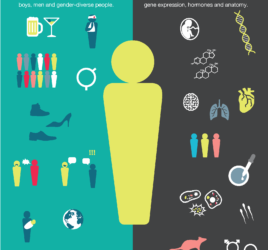
Everyone knows what attention is
In 1890, William James proposed, ‘Everyone knows what attention is’ (James, 1890, p.404). He provided the first description of attention: ‘It is the taking possession by the mind, in clear and vivid form, of one out of what seem several simultaneously possible objects or trains of thought. Focalization, concentration, of consciousness are of its essence. It implies withdrawal from some things in order to deal effectively with others, and is a condition which has a real opposite in the confused, dazed, scatterbrained state which in French is called distraction, and Zerstreutheit in German’.
However, 130 years later, psychologists are still struggling how to measure attention reliably, particularly impairments of attention. That’s not to say we have no clue at all about attention. In fact, cognitive psychology, and later clinical neuropsychology, delivered many insights into human attention processes.
For example, Posner and Rafal (1987) proposed that attention consists of multiple components, rather than it being one condition (as suggested by William James’ quote). From then on, different models of attention have been tested in healthy people as well as in clinical groups with focal brain damage. This has resulted in the conclusion that attention emerges from distinct brain systems that are dependent on each other. The neuropsychological model by Van Zomeren and Brouwer (1994) distinguishes no fewer than five forms of attention: focused (or selective) attention, divided attention, flexibility (or strategy), alertness, and sustained attention.
Focused and divided attention very closely resemble the first part of James’ definition, referring to the capacity to remain focused in the face of distractors and to divide attention across competing tasks, respectively. For example, while reading this blog post you will want to stay focused, and not allow yourself to be distracted by incoming messages on your smartphone. Then again, you may receive a really important call. In that case, you will want to control your focus, to pay attention to your call, and then switch attention back to reading this blog post. Nowadays, this is called flexibility by neuropsychologists.
These attention components all require ‘withdrawal from some things in order deal effectively with others’, necessitating selectivity of attention. However, attention does not only need to be selective for optimal functioning, its intensity is also crucial. If you are going to read this blog post from the beginning till the end in one shot, you will certainly need a stable level of activation for a sustained period of time. Contemporary neuropsychologists might therefore speak of sustained attention when relatively stable levels of activation can be maintained for an unbroken period of time. This activation may be enhanced in the occurrence of an event of high priority, which is nowadays called alertness by neuropsychologists.
Understanding the multicomponent structure of attention enables neuropsychologists to design and apply attention tasks aiming to measure these specific components. Thus, tasks have been developed for measuring focused attention, divided attention, flexibility, alertness, and sustained attention. Using these specific tasks can be useful for the assessment of impaired attention, for example in people with neurological conditions. However, already in the 1980s it was discovered that scores on attention tasks are better explained by their task characteristics (such as their cognitive load or duration) than by the individual components of attention (Van Zomeren & Brouwer, 1994). This problem is also referred to as ‘task impurity’.
One task may tap into several component processes, meaning that a focused-attention task may not only tap into focused attention, but also into other attention components (or even into other cognitive functions such as memory). Therefore, clinical neuropsychologists have ever since been pleading for a situation-specific approach to the assessment of attention.
For example, the Handbook of Clinical Neuropsychology states: ‘General statements about “the attention” of a patient should be avoided. The situation (or task) to a large extent determines which aspects of attention will be essential and whether deficits will become apparent. A patient’s attention may be adequate for a social chat, but inadequate for driving a car through dense traffic rush hour. Thus, statements about the attention of a patient should always be qualified in terms of the specific task and situation. The assessment of attention should never be limited to performance on a single task’ (Spikman & Van Zomeren, 2010, p. 81). It is surprising, though, that questionnaires for the assessment of adults with Attention Deficit Hyperactivity Disorder (ADHD), who by definition suffer from attention problems, hardly ever use the situation-specific approach. Often questions are asked about attention in general. For example, the ADHD Self-report Scale asks: ‘How often are you distracted by activity or noise around you?’ (p.248, Kessler et al., 2005). Notably, the answer may not only depend on the type of situation, but also on the person’s interpretation of ‘often’.
Recognizing this need for situation-specific measures, my colleagues and I recently developed the Everyday Life Attention Scale (ELAS; Groen et al., 2019). We aimed to create a neuropsychology-based questionnaire that is sensitive to attention impairments in clinical populations, in particular adults with ADHD.
The ELAS asks about multiple specific everyday situations, such as reading, having a conversation, and driving. For each situation, the same questions are asked about the different components of attention. By means of (confirmatory) factorial analysis we could unravel the structure of attention in everyday life in a large general population sample. It was unsurprising to us that attention in everyday life can best be described by its contextual demands: the most optimal fit of the factor structure was around the nine situations and not, as attention models would predict, around the components of attention. Thus, in everyday life, people do not distinguish between different neuropsychological components of attention; they blend into one situation-specific attentional experience.
We believe the ELAS is a reliable and valid measure of attention problems. The situation-specific approach turned out to be sensitive to impairments of attention in adults with ADHD. For example, most ADHD patients who completed the ELAS indicated to be severely inattentive in five or more situations (compared to matched comparisons from the general population), whereas this was only the case for a minority among adults with another mental disorder, such as major depression or schizophrenia. Thus, to assist practitioners to evaluate attention in everyday life, we recently collected Dutch norm scores and created an easy-to-use scoring tool (Fuermaier et al., 2019). The ELAS and the scoring tool are freely available for use in clinical practice as well as research; feel free to contact me or my colleagues to make use of them.
Everyone knows what attention is… Everyone has a sense of their own attentional functioning, but it is extremely difficult to know how much better or worse your attention is compared to others. For example, if your attention fails to read a blog post till the end, do you then have an attention problem? Neuropsychological measures, such as the ELAS, help to objectify such everyday life attention problems.
Acknowledgements
The work cited in this blog post (Fuermaier et al.,2019; Groen et al., 2019) would not have been possible without support of the Internet Research Fund of the Heymans Institute.
Picture from Flickr by Randy Gibson
References
Fuermaier, A.B.M., Groen, Y., Tucha, L., Weisbrod, M., Aschenbrenner, S., & Tucha, O. (2019). The Everyday Life Attention Scale (ELAS): Normative data of n = 1874 Dutch participants. Applied Neuropsychology: Adult. doi: 10.1080/23279095.2019.1605994
Groen, Y., Fuermaier, A.B.M., Tucha, L., Weisbrod, M., Aschenbrenner, S., & Tucha, O. (2019). A situation-specific approach to measure attention in adults with ADHD: The everyday life attention scale (ELAS). Applied Neuropsychology: Adult. 26(5), 411-440. doi: 10.1080/23279095.2018.1437730
James, W. (1890). The Principles of Psychology. Retrieved from: https://psychclassics.yorku.ca/James/Principles/prin11.htm#f1
Kessler, R.C., Adler, L., Ames, M., Demler, O., Faraone, S., Hiripi, E., Howes, M.J., Jin, R., Secnik, K., Spencer, T., Ustun, T.B., Walters, E.E (2005). The World Health Organization Adult ADHD Self-Report Scale (ASRS): a short screening scale for use in the general population. Psychol Med,35(2):245-56.
Posner, M. I., & Rafal, R. D. (1987). Cognitive theories of attention and the rehabilitation of attentional deficits. In M. J. Meier, A. Benton & L. Diller (Eds.), Neuropsychological rehabilitation (pp. 182–201). New York, NY: Guilford Press.
Spikman, J., & van Zomeren, E. (2010). Assessment of attention. In J. Gurd, U. Kischka & J. Marshall (Eds.), The handbook of clinical neuropsychology (2nd ed., pp. 81–96). Oxford, UK: Oxford University Press.
Van Zomeren, A. H., & Brouwer, W. (1994). Clinical neuropsychology of attention. New York, NY: Oxford University Press.



